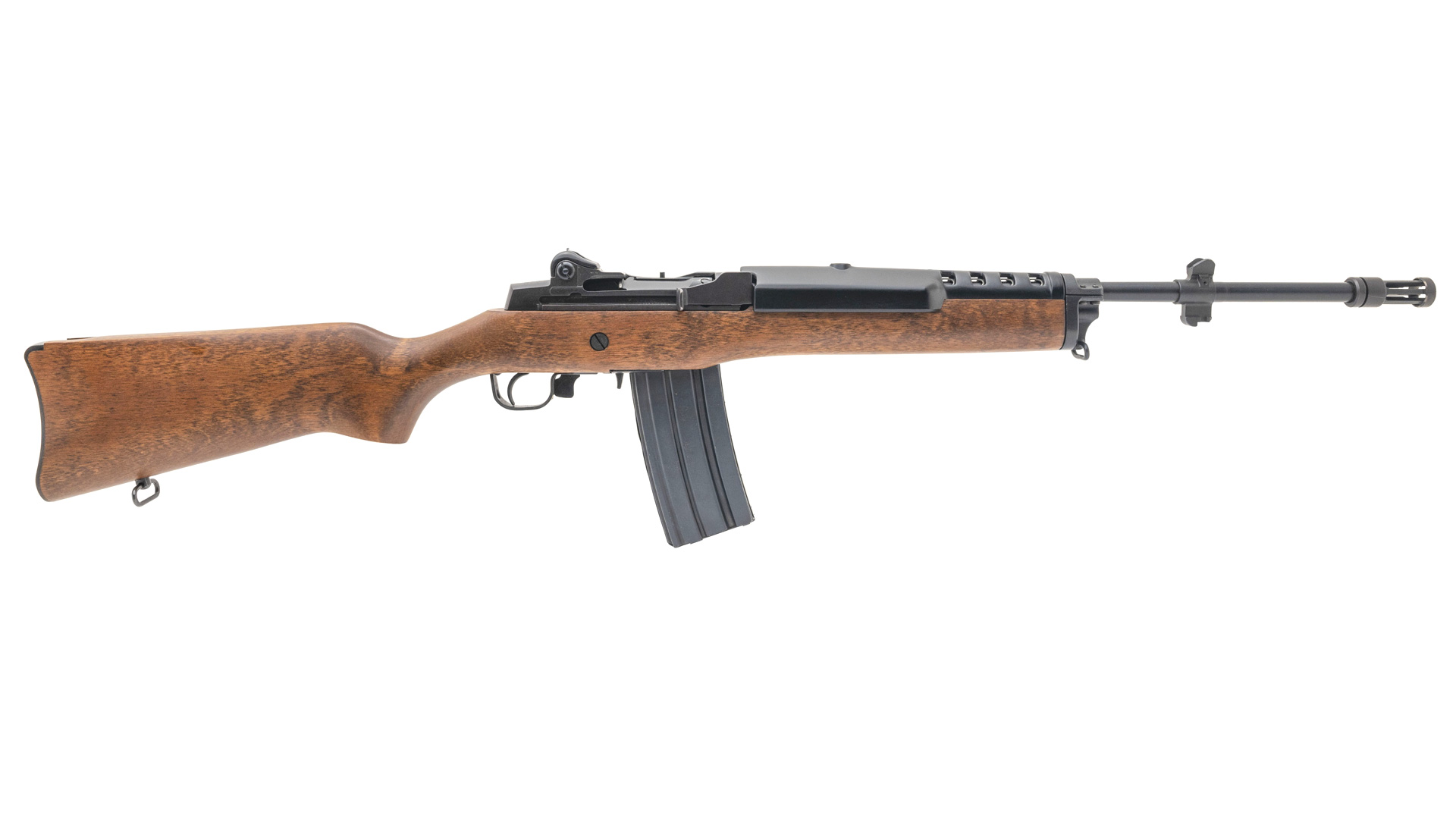
You don’t need to watch television to know times are hard, and buying a shotgun might be a back-burner idea right now. Nonetheless, there are serviceable semi-automatics that may be had for a reasonable price. With a suggested retail price of $400, the Russian-made Baikal MP153 is one such gun. One might think Baikal is the name of an armory or manufacturing city in Russia, but it is actually the name of the world’s largest lake, located in southern Siberia.
Our test MP153 came in all-black with a matte-finished blued barrel and receiver: The stocks are synthetic and black as well. There is a camouflage version available for a few dollars more. The pistol grip has a narrow stippled section on each side where checkering would normally be. The fore-end is smooth throughout except for a 9/16 inch by 6½ inch area of similar stippling in the finger groove near the fore-end’s top. In test firing, these areas provided a sufficient grip, but in cold wet weather might prove slippery.
The action is very much like the familiar Remington Model 1100, although the barrel extension is a short 2 inches; most run closer to 4 inches. The receiver is steel with a reinforcing thickness of steel running rearward from the point where the barrel extension abuts it in the top of the receiver. Apparently there is not enough flex in this area to cause concern.
The bolt rests atop the dual action bars and locks up into a notch in the barrel extension exactly like the Model 1100. The bolt seems to be built like the 1100’s bolt with takedown the same, which is by driving out a small retaining pin while the firing pin is depressed, then slowly allowing the pin to back itself out of the bolt body under spring tension. At that point the locking block, which mates into the cut in the barrel extension, can be removed. The bolt carries dual extractors that grip both sides of the shell head. The ejector is riveted into the left side of the receiver, where it kicks the fired hull free at the end of the bolt’s rearward travel.
The trigger group uses a two-piece carrier similar to that of a Benelli. In order to lock the bolt to the rear for loading, a small tab projecting from the right front side of the trigger guard must be pushed rearward. In shooting the MP153, we found it difficult to push the tab to release the carrier. Alternately we used a screw-driver blade of a pocket knife, and finally determined that if a finger or thumbnail was used, the release did move, albeit stiffly. The trigger pull averaged a surprisingly light 4 pounds, 9 ounces. That said, there is a large amount of preliminary take up, and once this slack is taken out, the actual pull is very long and somewhat gritty.
Another catch was when loading the magazine. On the range we found that loading the shells into the magazine was not a smooth process. They tended to catch about the time the metal head reached half way into the magazine tube. We never determined the hang up, and it was only a momentary distraction, as with some additional pressure the round slid into the magazine. It was necessary, though, to ensure that the round was fully pushed into the magazine until the latch clicked, which is normal with any tubular-magazine firearm. In its favor, the magazine tube is either stainless steel or chrome-plated, as is the interior of the barrel, which makes cleaning the powder residue from firing quick and easy, and guards against rust and corrosion.
Also to its credit, the action-return spring is wound around the magazine tube, in much the same way as the new Beretta A400. This solves a myriad of jamming problems attributable to those shotguns whose spring is housed in a tube in the buttstock where excess lubricant and dirt collects.
Four choke tubes are included and marked improved cylinder, modified, full and extra full. They varied from the norm in constriction, as do nearly all supplied choke tubes, with the modified tube having less constriction than the improved cylinder. The extra-full, measured with a digital bore micrometer, and when compared with the cylinder bore of 0.724 inches, came out to only 0.014 inches, just shy of light modified’s 0.015 inches.
In shooting the Baikal MP 153, it seemed to handle quite well. At 7 pounds, 10 ounces, it is about average for a gas-operated semi-automatic, although in the hands it feels heavier. With the synthetic stock the weight is more forward, and that helps to keep the swing moving. Baikal recommends firing a couple of boxes of 1¼-ounce field loads before shooting target loads. Too, there is a spanner included that can be used to tweak the gas system for lighter loads and for lead 3½-inch loads that carry a much heavier payload than comparable steel cartridges.
In all, the MP153 shoots well and handles equally so. After some break-in with heavy loads it ought to shoot 1-ounce target loads with some dependability. The Baikal is intended for hunting, and although it’s a little rough around the edges, for $400 it’s quite a serviceable shotgun.
Manufacturer: Baikal, Russia, www.imzcorp.com
Importer: U.S. Sporting Goods/EAA Corp.; (321) 639-4842; www.eaacorp.com
Action type: gas-operated, semi-automatic shotgun
Gauge: 12; 3½" (also 3" and 2¾")
Trigger: single-stage; 4-lb., 9-oz. pull
Magazine: under-barrel tubular: capacity, four 3½"; five 3" or five 2¾"; plug provided to restrict magazine to two cartridges.
Barrel: 28" chrome-lined
Chokes: steel-compatible interchangeable tubes: improved cylinder, 0.006"; modified, 0.0045"; full, 0.012"; and extra full, 0.014" (constrictions based on cylinder bore of 0.724")
Sights: ventilated rib with steel front bead.
Stock: black synthetic: length of pull, 14¼"; drop at heel, 17⁄16"; drop at comb, 27⁄16",
Overall Length: 49"
Weight: 7 lbs., 10 ozs.
Metal Finish: matte blue
Accessories: owner’s manual, four choke tubes, spanner to adjust gas system and choke-tube wrench
Suggested retail price: $400






































